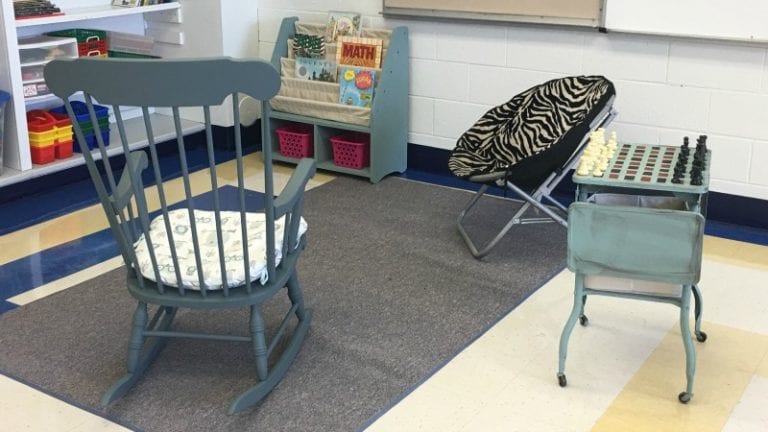When is the right time to talk to kids about mental health? A few years ago, the answer might have been never. However, with more kids struggling with mental health issues, today’s students are ready to learn about mental health from a young age. Why not take some time this week to leave the principal’s office for a classroom read aloud about mental health? The kids and teachers will see that you walk your talk when it comes to mental health.
Just a heads up, School Leaders Now may collect a share of sales from the links on this page. We only recommend items our team loves!
1. Today I Feel Silly & Other Moods That Make My Day by Jamie Lee Curtis, Illustrated by Laura Cornell
Ages: 4–8

Jamie Lee Curtis is better known for her acting accolades than for the books she has authored. Yet, this one is downright charming. The quick verse and bright illustrations will hold your students’ attention, while teaching them to name different feelings and emotions. Curtis covers everything from silly to sad. The take away message: Any feeling you have is okay.
Why it’s a good book about mental health: A key component of talking about mental health is identifying and naming feelings. From this book, kids will learn to put a name to their emotions. It will also help kids talk more openly about their emotions.
2. The Fox and the Star by Coralie Bickford-Smith
Ages: All ages

The Fox and the Star comes with stunning illustrations and simple text, making it accessible to students of any age. The story leaves room for interpretation, depending on students’ maturity level and experiences. The story is about about Fox and his friendship with Star, who lights up the forest for Fox to see. When Star disappears, Fox must learn to navigate without her.
Why it’s a good book about mental health: Fox is scared and overwhelmed when Star disappears but is eventually able to find his way. The story touches on feelings of depression and loss and leaves room for each student to draw upon their own experience. Overall, the book offers a great message of hope.
3. Mrs. Gorski, I Think I Have the Wiggle Fidgets by Barbara Esham, Illustrated by Mike and Carl Gordon
Ages: 6–8

David really wants to pay attention in class, but he just can’t stay focused. He would rather daydream and dance, which is frustrating for his teacher. Luckily, David’s dad had the same trouble as a boy and helps his son come up with creative solutions.
Why it’s a good book about mental health: Attention disorders are some of the most common mental health complications seen in the classroom. David’s story makes the issues relatable, while also showing the need to find solutions.
4. Everyone by Christopher Silas Neal
Ages: 3–6

This book gives an overview of all emotions, positive and negative. From feeling frustrated to happy to all the emotions at once, Neal helps normalize the fact that everyone experiences a range of feelings.
Why it’s a good book about mental health: With simple text and illustrations, this story makes emotions accessible to preschool and kindergarten students. Because there isn’t much explanation of what each emotion is, teachers are free to open up conversation. Using this book as an interactive lesson about feelings is a great way to foster emotional intelligence in the classroom.
5. Visiting Feelings by Lauren Rubenstein, Illustrated by Shelly Hehenberger
Ages: 5–8

This book talks about the different feelings that visit each of us, encouraging kids to explore each emotion that comes their way by treating it like a guest: “Can you open your door/and invite it to play?/Can you ask what it wants,/and then check it out?” The story doesn’t label feelings as positive or negative but encourages kids to explore any and all emotions.
Why it’s a good book about mental health: The open-ended invitation for kids to explore each feeling takes this book beyond the basics of naming emotions. The book is written by a licensed clinical psychologist and includes a note for parents and suggestions for activities that could be incorporated into the classroom.
6. Up and Down the Worry Hill by Aureen Pinto Wagner, Illustrated by Paul A. Jutton
Ages: 7–10

This book is meant for kids who experience obsessive-compulsive disorder or anxiety. The main character, Casey, worries about making his bed just right and washing his hands. As he learns to ride his bike down the big hill at the end of the street, a lovely parallel for treating anxiety unfolds.
Why it’s a good book about mental health: This book explicitly addresses mental health by talking about excessive worry. It also presents treatment as the solution. Casey is excited to get treatment for his condition, and the tone is hopeful throughout. Wagner is the director of The Anxiety Wellness Center in North Carolina. Although the book may resonate most with students who have experienced anxiety or OCD, it can also be used in the general classroom.
Using these books is an easy way to normalize mental health conversations in your school. Make picture books a part of your principal daily life.
Join our Facebook group Principal Life for more conversation about and insights into the challenges of school leadership.

